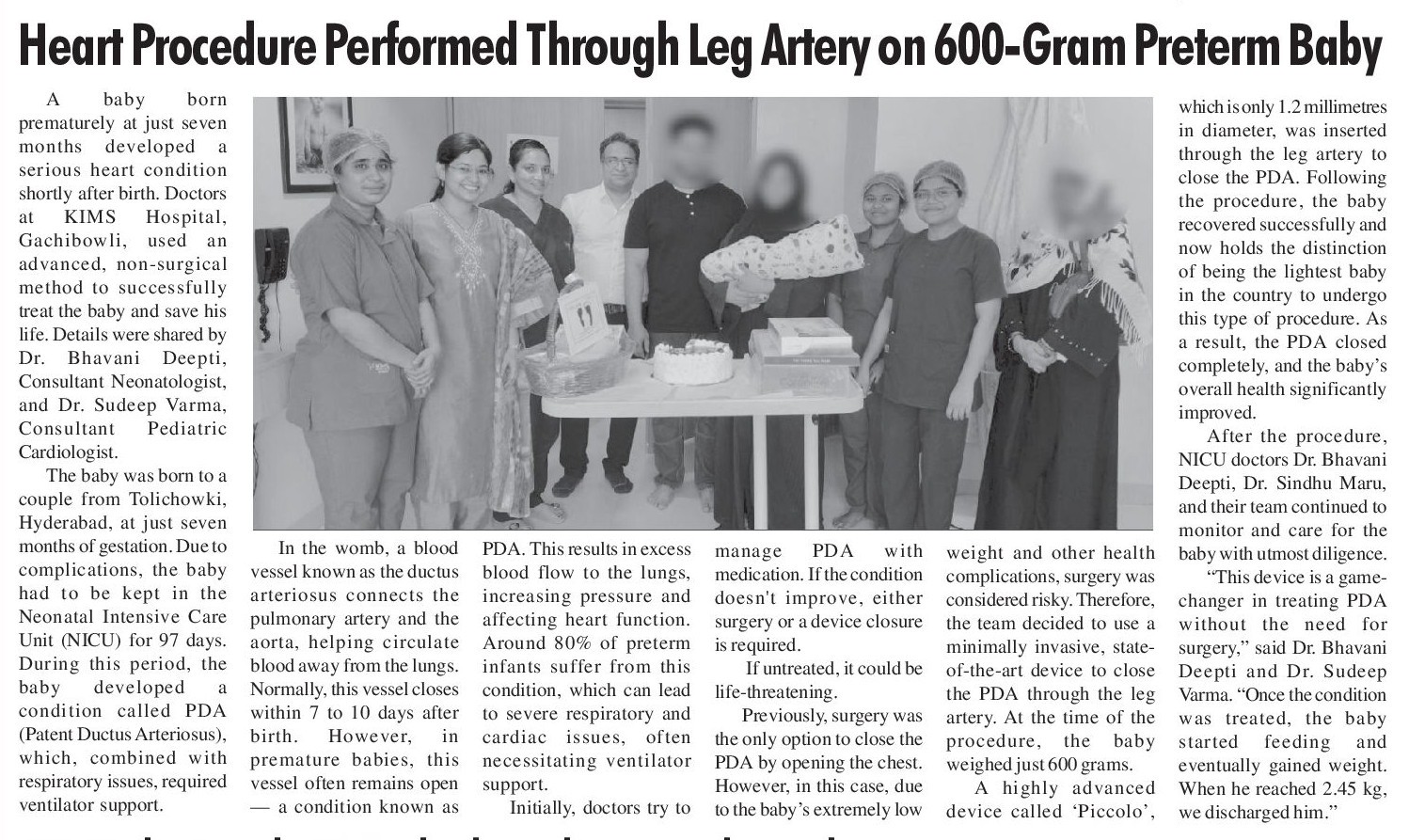Top NICU Hospital In Gachibowli
Welcome to KIMS Cuddles, your beacon of hope for neonatal care in Gachibowli, Hyderabad. Our commitment to providing exemplary NICU services makes us the top choice for families seeking unparalleled care for their newborns. Let's explore what distinguishes KIMS Cuddles as the best NICU hospital in Gachibowli.
Understanding NICU in a Hospital
A Neonatal Intensive Care Unit (NICU) is a specialized medical unit within a hospital designed to provide intensive care to newborns who require specialized medical attention. These units play a pivotal role in caring for premature infants or those born with medical complexities, ensuring they receive the support necessary for a healthy start in life.
Levels of NICU
NICUs are categorized into different levels based on the complexity of care they can provide. KIMS Cuddles takes pride in being a Level 4 NICU, representing the highest level of care. This designation means that we are equipped to handle the most complex cases, ensuring that even the tiniest and most fragile newborns receive the specialized attention they need.
Why Choose KIMS Cuddles in Gachibowli
Best NICU Hospital in Gachibowli: KIMS Cuddles is recognized as the best NICU hospital in Gachibowli, Hyderabad, with a commitment to providing exceptional care for newborns. Our team of skilled neonatologists, pediatricians, and nurses collaborates to create a nurturing and healing environment for infants in need.
- Proximity and Accessibility: KIMS Cuddles is the nearest hospital with NICU services in Gachibowli, ensuring that families have quick access to specialized care for their newborns. In emergencies, proximity becomes crucial, and our strategic location minimizes travel time during critical moments.
- Level 4 NICU Services: As a Level 4 NICU, KIMS Cuddles is equipped with state-of-the-art facilities and advanced medical technology. Our commitment to the highest level of care ensures that we can handle a wide range of neonatal conditions, providing comprehensive support to newborns and their families.
- Family-Centered Care: We believe in involving families in the care of their newborns. Our NICU is designed to promote parent-infant bonding, fostering an environment of open communication and collaboration between our healthcare team and parents.
Booking an Appointment
For the convenience of our valued patients, KIMS Cuddles offers a streamlined online booking system. Booking an appointment online ensures that you can secure a consultation with our NICU specialists promptly, allowing for timely assessment and intervention when needed.
When it comes to the well-being of your newborn, choose KIMS Cuddles in Gachibowli, Hyderabad, for unparalleled NICU services. As the best NICU hospital in the area, we combine expertise, accessibility, and compassion to provide the highest standard of neonatal care. Take the first step in securing a bright and healthy future for your newborn – book your appointment online and entrust their care to the leading neonatal experts at KIMS Cuddles Gachibowli.




















